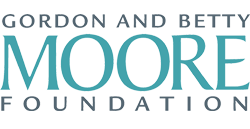Maker Camp is funded in part by the Gordon and Betty Moore Foundation and the generous support of the Members of Make: Community.

15 MINUTES TO 1 HOUR
TO COMPLETE

WHAT WILL YOU MAKE?

WHAT WILL YOU NEED?
- A clear plastic cup
- A 1/4 cup measuring cup
- A 1 teaspoon measuring spoon
- Liquids to measure
- Water
- Salt
- An Android phone with Google's Science Journal app installed
STEP 1
Find Your Ambient Light Sensor
With Google’s Science Journal app running in ambient light mode and a bright light overhead, move your finger around the screen of the phone. When you see the reading drop, you have located the light sensor for your phone — we will need to center our later tests over this spot.
STEP 2
Prepare Your Test
Place your phone on a level surface under bright light. If your phone has a case or another accessory on it that won’t let it sit flat, shim it with some cardboard or other easily accessible material.
Measure 1/4 cup of your first liquid and carefully pour it into the clear plastic cup. This is your first sample.
STEP 3
Measure Your First Sample
With the sample placed over your light sensor, start recording on your first test. Leave the system to record for a little while to make sure table vibrations or your shadow when turning on the recording isn’t throwing off the reading.
STEP 4
Measure Your Second Sample
Following the same steps, measure your second sample and compare the two.
STEP 5
Experiment with Salt
Let’s see how incremental changes can affect our readings.
Start by filling your cup with 1/4 cup of water and take a new measurement with the Science Journal app.
Add 1 tsp of salt to your cup and stir until it is fully dissolved. Now take a new measurement.
Continue adding salt, 1 tsp at a time, and take measurements after each until the salt won’t dissolve anymore.
WHAT'S NEXT?
How did the salt affect your measurements? Can you chart those measurements in a way that you could closely approximate what the light level would be at any given amount of salt (1.5 teaspoons, 2.75 teaspoons)?
Transparency is commonly used to measure the amount of dissolved solids and particulate matter found in fluid samples. Try measuring other fluids around your home (be careful and stay out of the cleaning products). Do you have a stream, pond, lake, or river nearby? How does the transparency of the water change after a heavy rain shower compared to a period of time without rain? Does salt water’s transparency differ from fresh water? Why do you think that is?
If you would like to learn more about measuring light with Google’s Science Journal app, check out Google’s Getting Started With Light tutorial.
Please Note
Your safety is your own responsibility, including proper use of equipment and safety gear, and determining whether you have adequate skill and experience. Power tools, electricity, and other resources used for these projects are dangerous, unless used properly and with adequate precautions, including safety gear and adult supervision. Some illustrative photos do not depict safety precautions or equipment, in order to show the project steps more clearly. Use of the instructions and suggestions found in Maker Camp is at your own risk. Make Community, LLC, disclaims all responsibility for any resulting damage, injury, or expense.
ALL DONE? SHARE IT!
Share pictures and videos of your cool build! Be sure to use #maketogether or #makercamp
POST YOUR PROJECTSKits and Books From Maker Shed
Make: produces a variety of great products and helpful project tutorials to enhance your making experience.






